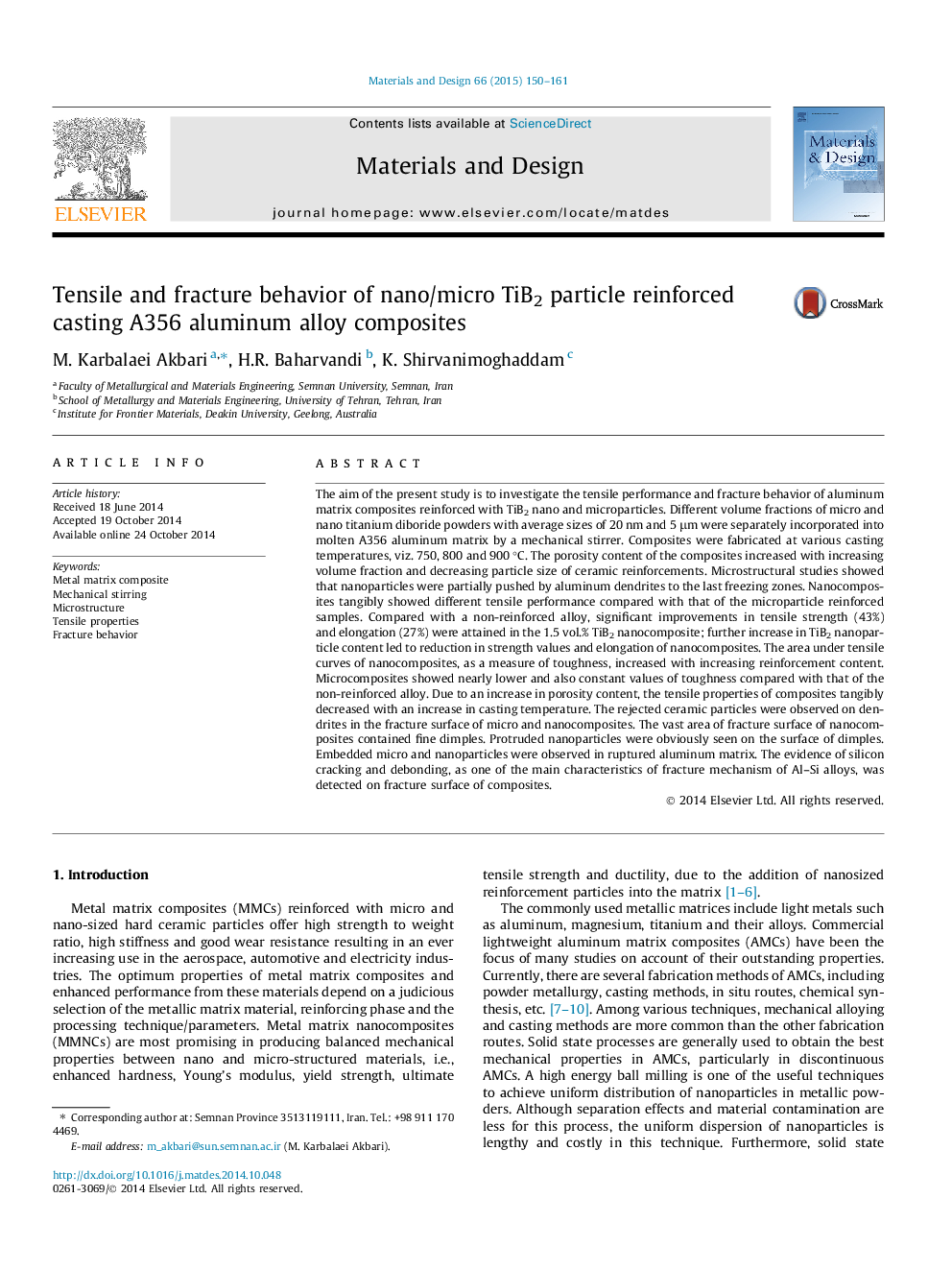| کد مقاله | کد نشریه | سال انتشار | مقاله انگلیسی | نسخه تمام متن |
|---|---|---|---|---|
| 10426493 | 908067 | 2015 | 12 صفحه PDF | دانلود رایگان |
عنوان انگلیسی مقاله ISI
Tensile and fracture behavior of nano/micro TiB2 particle reinforced casting A356 aluminum alloy composites
دانلود مقاله + سفارش ترجمه
دانلود مقاله ISI انگلیسی
رایگان برای ایرانیان
کلمات کلیدی
موضوعات مرتبط
مهندسی و علوم پایه
سایر رشته های مهندسی
مهندسی (عمومی)
پیش نمایش صفحه اول مقاله

چکیده انگلیسی
The aim of the present study is to investigate the tensile performance and fracture behavior of aluminum matrix composites reinforced with TiB2 nano and microparticles. Different volume fractions of micro and nano titanium diboride powders with average sizes of 20 nm and 5 μm were separately incorporated into molten A356 aluminum matrix by a mechanical stirrer. Composites were fabricated at various casting temperatures, viz. 750, 800 and 900 °C. The porosity content of the composites increased with increasing volume fraction and decreasing particle size of ceramic reinforcements. Microstructural studies showed that nanoparticles were partially pushed by aluminum dendrites to the last freezing zones. Nanocomposites tangibly showed different tensile performance compared with that of the microparticle reinforced samples. Compared with a non-reinforced alloy, significant improvements in tensile strength (43%) and elongation (27%) were attained in the 1.5 vol.% TiB2 nanocomposite; further increase in TiB2 nanoparticle content led to reduction in strength values and elongation of nanocomposites. The area under tensile curves of nanocomposites, as a measure of toughness, increased with increasing reinforcement content. Microcomposites showed nearly lower and also constant values of toughness compared with that of the non-reinforced alloy. Due to an increase in porosity content, the tensile properties of composites tangibly decreased with an increase in casting temperature. The rejected ceramic particles were observed on dendrites in the fracture surface of micro and nanocomposites. The vast area of fracture surface of nanocomposites contained fine dimples. Protruded nanoparticles were obviously seen on the surface of dimples. Embedded micro and nanoparticles were observed in ruptured aluminum matrix. The evidence of silicon cracking and debonding, as one of the main characteristics of fracture mechanism of Al-Si alloys, was detected on fracture surface of composites.
ناشر
Database: Elsevier - ScienceDirect (ساینس دایرکت)
Journal: Materials & Design (1980-2015) - Volume 66, Part A, 5 February 2015, Pages 150-161
Journal: Materials & Design (1980-2015) - Volume 66, Part A, 5 February 2015, Pages 150-161
نویسندگان
M. Karbalaei Akbari, H.R. Baharvandi, K. Shirvanimoghaddam,